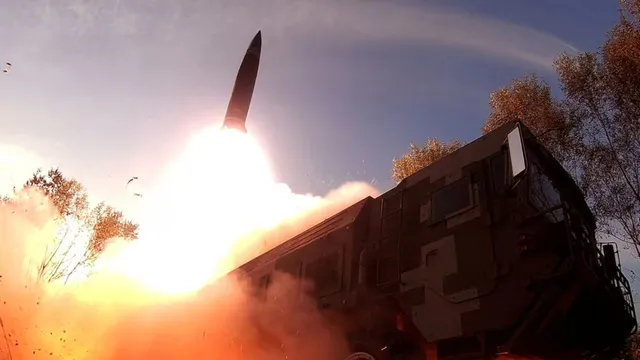- By Supratik Das
- Tue, 17 Jun 2025 10:50 AM (IST)
- Source:JND
India has increased its nuclear arsenal to an estimated 180 warheads in 2025, while keeping a lead over Pakistan, which is also modernising its nuclear delivery vehicles, said the Stockholm International Peace Research Institute (SIPRI) in its annual report. India's nuclear posture is further developing with a specific goal of upgrading its delivery means and investments in canisterised missile technology to facilitate pre-mounting of warheads for faster and safer launch.
India's Next-Gen Missiles: Agni-P, MIRV-Capable Agni-5
India's Agni Prime (Agni-P) missile, a canisterised and modernised missile with a 1,000–2,000 km range, is one of these changes. Also, the successful experiment was a technological milestone involving the ability to deliver Multiple Independently Targetable Re-entry Vehicles (MIRVs) over intercontinental ranges of more than 5,000 km using a precise Agni-5 missile. Prime Minister Narendra Modi welcomed the test, terming it a milestone in India's indigenous defence strength. "Proud of our DRDO scientists for Mission Divyastra," Modi posted on X following the test.
Pakistan is also expanding new nuclear-capable systems and building up fissile material, showing intentions to expand its arsenal over the next decade, SIPRI reported. Although the actual number of warheads was not revealed, Pakistan is estimated to be a notch behind India in cumulative nuclear stockpiles. The report also raised concerns over India-Pakistan military confrontation following the Pahalgam Attack, warning that such an event between nuclear-armed neighbours has a high potential for escalation. Matt Korda, a senior analyst at SIPRI and the Nuclear Information Project, said, "The conjunction of attacks on nuclear-capable infrastructure along with disinformation operations threatened to escalate a conventional dispute into a nuclear crisis. It is a wake-up call."
China's Nuclear Stockpile Expanding "Fastest of Any Country"?
While India and Pakistan are also gradually modernising, the Chinese nuclear growth is the fastest, SIPRI has found. China has been adding approximately 100 warheads each year since 2023, taking its estimated stockpile to 600 warheads as of January 2025. China is finishing 350 new ICBM silos in its northern deserts and eastern mountains, which could mean that Beijing would match the US and Russia in terms of ICBMs by 2030. The worldwide total of nuclear warheads totals 12,241 as of January 2025, of which 9,614 are held in military inventories and approximately 2,100 are deployed on high-alert systems, primarily by Russia and the US. SIPRI cautioned that the post-Cold War period of nuclear cuts is now "coming to an end," to be succeeded by "increasingly large arsenals, more strident rhetoric and the collapse of arms control treaties." SIPRI Director Dan Smith stated, "China is gradually expanding its nuclear arsenal. If the trends continue, it might have 1,000 warheads in 2032–2035, though less than the US or Russia."
Key Estimates (2025 SIPRI Yearbook):
• India: 180 warheads
• Pakistan: less than India
• China: 600 warheads, increasing by ~100/year
• Russia: 5,459 warheads
• USA: 5,177 warheads
• Global Total: 12,241 warheads
• Deployed on High Alert: 2,100 (largely Russia/US)
ALSO READ: Fake News As A Weapon In Modern Warfare? Israel-Iran War Rekindles Debate Amid Rising Tension
As India and Pakistan were engaged in a conflict, and China was advancing ahead, the SIPRI report points to a pressing need for revived efforts for arms control and confidence-building measures to avert accidental or escalatory nuclear conflict in the region.

